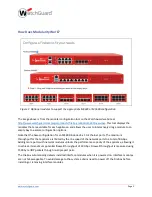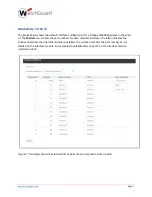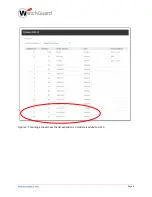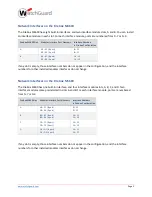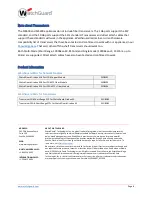
Page 1
How Modularity Works
Technical Brief
WatchGuard® Technologies, Inc.
Published: February 2016
INTRODUCTION
WatchGuard UTM (Unified Threat Management) appliances provide the protection that midsize
businesses and distributed enterprises need today to prevent infection from malware, ransomware, and
advanced threats. UTM capabilities provide the benefit of an all-in-one appliance with advanced security
controls, and WatchGuard Dimension, which ships standard on all WatchGuard appliances, provides
advanced threat visibility and network intelligence. But organizations need this protection from an
appliance that fits into their existing network. They cannot change network topology to fit their new
security appliance.
Network environments are getting more diverse with a vast array of options to choose from. Fiber is not
just found in the enterprise datacenter. Even small and midsize businesses have fiber connections from
their Internet Service Providers (ISPs), and switch equipment that provides 1 Gb or 10 Gb fiber.
WatchGuard’s Firebox M4600 and Firebox M5600 appliances both provide two empty bays that can be
used to add network modules to define a configuration that meet the needs of almost any network
configuration. There are three modular interface types to choose from, and they can be used in any
combination.
4 x 10 Gb Fiber
8 x 1 Gb Copper
8 x 1 Gb Fiber
Expandable network modules offer room to grow for the future. If the need for more network ports into
the firewall grows, the business doesn’t have to do a costly rip-and-replace. The network admin can
simply add a new module to the existing appliance to increase port density.


